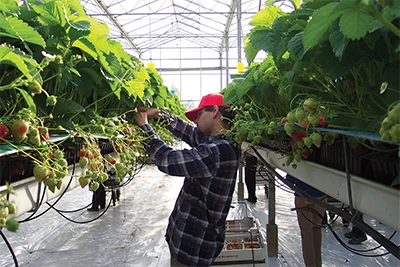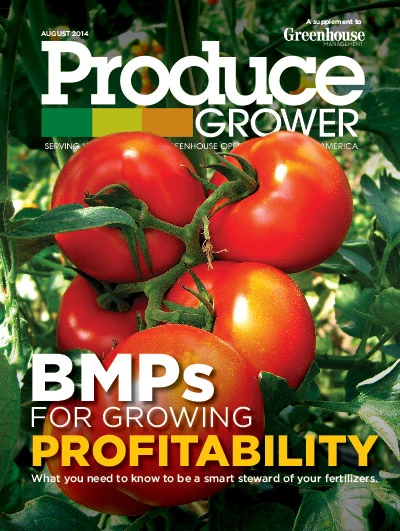
 The public’s understanding of and appetite for food traceability information fueled by recent food safety scandals has never been greater. Consumers and retailers now expect easy access to information on how and where food was manufactured, where the ingredients came from, and where the finished item ended up.
The public’s understanding of and appetite for food traceability information fueled by recent food safety scandals has never been greater. Consumers and retailers now expect easy access to information on how and where food was manufactured, where the ingredients came from, and where the finished item ended up.
These requirements are placed on produce providers against a backdrop of having to do more with less. Lower yields due to adverse weather conditions and the need to feed an ever-increasing population mean it’s acutely important to be able manage produce quality and look end-to-end right through the supply chain.
Innovative and forward thinking produce providers are implementing solutions that go beyond the confines of the pack-house. These producers are looking to measure crop quality or grade product actually before it even reaches any kind of production process. The goal is to be able to select suitable raw produce before margins are eroded further. Higher graded product will be automatically allocated to meet customer specifications on open orders. However, there is a growing requirement to find alternative outlets and buyers for lower grade produce to maximize profits and keep waste to an absolute minimum. With so many uses for a single crop it is important that producers can track exactly where each case of produce has come from and where it goes.
The Produce Traceability Initiative Leadership Council continues to push for industrywide adoption of standardized case-level traceability. The consensus of council members is that the industry should stay on course with traceability implementations based on standardized product identification with batch and lot numbers encoded in GS1-128 bar codes on case labels. Broad adoption of advance ship notice, an Electronic Data Interchange transaction, for exchanging traceability data plus outbound recording of the bar code data on cases of produce from distribution centers to retail and foodservice operations are critical to the full realization of PTI goals, according to the group.
There are many benefits to be gained from implementing a full traceability solution:
- Customers and consumers confidence can be enhanced and maintained.
- The scope and cost of recalls can be limited to suspect product allowing only non-implicated product to remain in distribution and on store shelves.
- Investigations can occur more efficiently, expediting tracking while minimizing business disruptions and costs.
- The information can be stored electronically throughout the supply chain, permitting electronic interrogation, analysis and sharing to inform other business areas.
When budgeting to implement a traceability solution, an organization should first consider that the public health, consumer confidence and economic costs of not implementing traceability significantly outweigh the costs of putting a traceability practice in place.
In turbulent times, innovation and technology are always at the heart of problem solving. Of course, with any system, procedure and accurate record keeping are critical to usability and success. One of the mantras to observe is that even the best tracking and tracing systems, become ineffective if they are not populated with real ‘as-it-happens’ data.
Mobile track and trace and quality assurance applications, which take advantage of the Cloud are becoming increasingly common place. These offer cost effective, flexible, user-friendly applications, available wherever and whenever needed via any Internet- enabled devices.
Most applications can offer “Store & Forward” features to enable continuous data collection even when connectivity is not available and interoperability ensures integration with existing back end ERP solutions. Screens and test sequences can very easily be configured by the user to suit mode-of-operation or business processes.
Once collected, data is usually uploaded to a web portal where information and results are instantly available to be interrogated or displayed in useful dashboards and KPI indicators. This provides a readily accessible platform where interested supply chain stakeholders, customers and other business units can view the data simply by being granted access to the portal.
Users can quickly analyze the collected QA data to see what product has passed through, which tests were performed, where and by whom. Photographs can be appended to a record to provide visual evidence or quality or damage, and the test location can be dynamically displayed using mapping data. Connectivity with other external devices is also possible, these include: integration with weigh scales, printing to mobile (for some devices) and fixed printers, pressure testers, thermo-meters, and probes.
Some of the benefits of adopting Cloud-based solutions include:
- Minimal up-front capital expenditure on hardware and infrastructure.
- Usage can be switched on and off to meet seasonal requirements.
- Utilize low cost or existing mobile devices, such as iPhone or iPad.
- One-time data entry.
- Reduction of paperwork and paper consumption.
- Instant reporting for improved visibility and management of nonconformances, potential shortages, or quality issues.
Field data capture has become almost a safety net to pre-empt any traceability issues further down the supply chain. Data captured at the produce source provides essential traceability data on produce origins. This data forms an essential part of an organization's overall traceability process and empowers category managers with information sourced from every part of the supply and production process.
When that happens because end-to-end tracking is in place, then that unexpected phone call from a retailer requesting an audit showing exactly where a particular case of product originated becomes less stressful.
Richard Jones is chief technology officer of Linkfresh, www.linkfresh.com.

Explore the August 2014 Issue
Check out more from this issue and find your next story to read.
Latest from Produce Grower
- TIPA Compostable Packaging acquires paper-based packaging company SEALPAP
- Divert, Inc. and General Produce partner to transform non-donatable food into Renewable Energy, Soil Amendment
- [WATCH] Sustainability through the value chain
- Growing leadership
- In control
- The Growth Industry Episode 8: From NFL guard to expert gardener with Chuck Hutchison
- 2025 in review
- WUR extends Gerben Messelink’s professorship in biological pest control in partnership with Biobest and Interpolis





